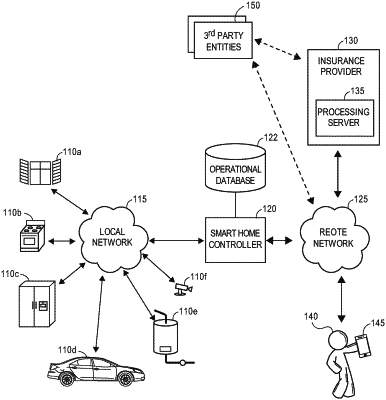| CPC G06Q 40/08 (2013.01) [E03B 7/071 (2013.01); G05B 15/02 (2013.01); G06Q 10/10 (2013.01); G06Q 30/0278 (2013.01); G06Q 50/16 (2013.01); G06Q 50/163 (2013.01); G08B 21/20 (2013.01); G16Y 10/50 (2020.01); H04L 12/2823 (2013.01); H04L 12/2827 (2013.01); G05B 2219/163 (2013.01); G05B 2219/2642 (2013.01); G08B 21/043 (2013.01); G16Y 40/10 (2020.01); H04L 12/2803 (2013.01)] | 19 Claims |

|
1. A computer-implemented method of limiting damage to a property populated with a plurality of devices on the property configured to monitor various conditions associated with the property, the method comprising:
generating, by one or more processors, a first instruction, wherein the first instruction is configured to control at least one of the plurality of devices to perform the first action, wherein the first action is intended to prevent or mitigate damage associated with a predicted or ongoing insurance-related event;
based upon an analysis of the first action, determining, by the one or more processors, that the first action is insufficient to prevent or mitigate damage associated with the predicted or ongoing insurance-related event;
in response to the determination, generating, by the one or more processors, a second instruction, wherein the second instruction is configured to control at least a second device from among the plurality of devices to perform a second action intended to prevent or mitigate the predicted or ongoing insurance-related event; and
controlling, by the one or more processors, the second device to perform the second action by transmitting, via a wired or wireless communication network, the second instruction, wherein the transmission of the second instruction causes the second device to interpret the second instruction and perform the second action.
|